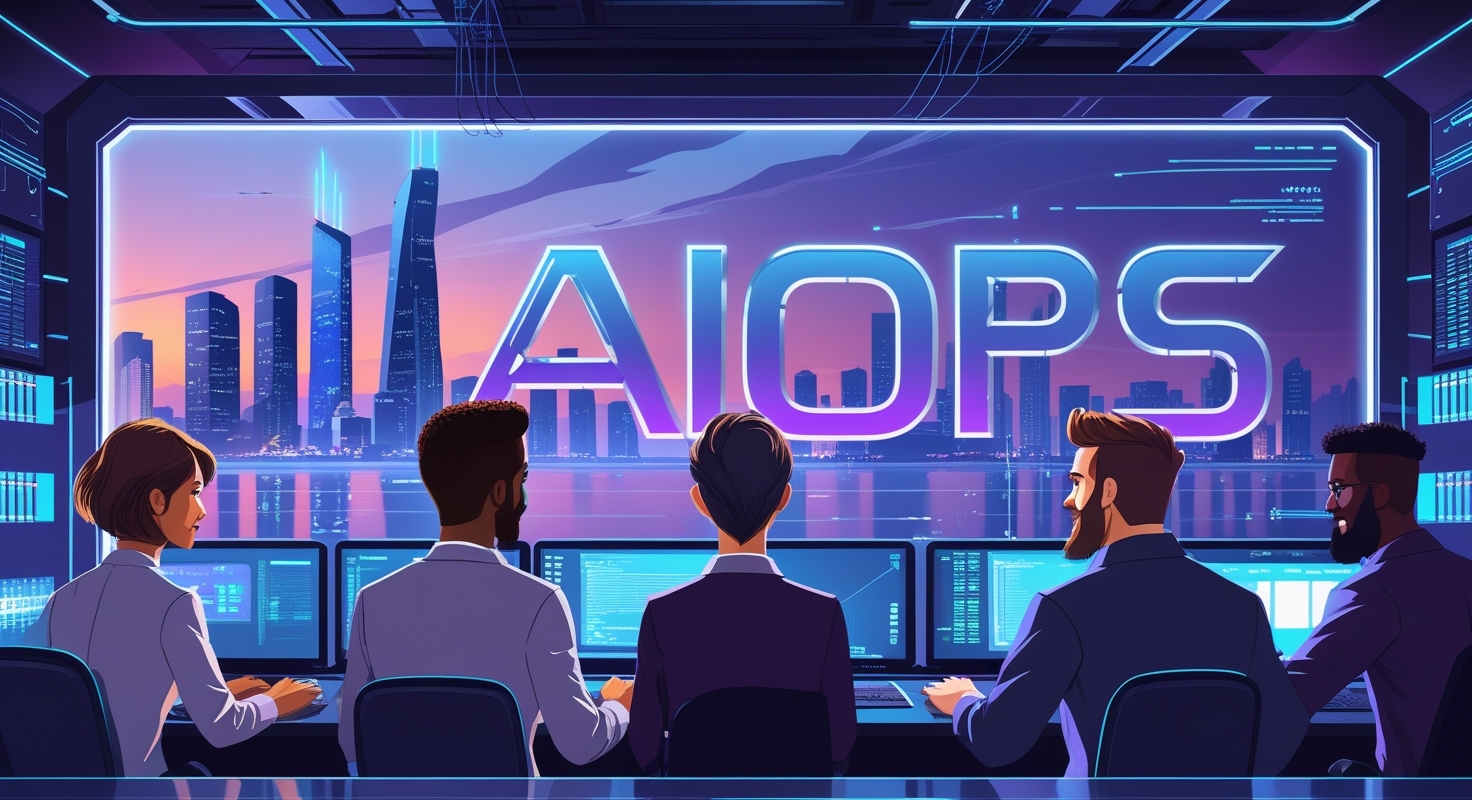The Future of IT Operations is Here: AIOps

The Future of IT Operations is Here: AIOps
Introduction
In today’s fast-paced digital ecosystem, IT operations face unprecedented challenges. The increasing complexity of hybrid cloud environments, the sheer volume of data generated, and the demand for real-time service delivery have outgrown traditional IT management tools and practices. Enter AIOps (Artificial Intelligence for IT Operations), a game-changing approach that integrates artificial intelligence, machine learning, and big data to revolutionize how organizations manage their IT infrastructure.
1. What is AIOps?
AIOps stands for Artificial Intelligence for IT Operations. It refers to the application of AI and ML technologies to enhance and automate various IT operations tasks. By leveraging large volumes of data from diverse sources (logs, events, metrics, etc.), AIOps platforms analyze patterns, detect anomalies, predict incidents, and offer intelligent recommendations to IT teams.
Core Technologies Behind AIOps:
- Artificial Intelligence (AI): Provides the intelligence to learn, reason, and make decisions.
- Machine Learning (ML): Enables systems to learn from data and improve over time.
- Big Data Analytics: Allows processing and analysis of massive datasets in real time.
2. Key Benefits of AIOps
- Real-time Anomaly Detection
AIOps platforms continuously monitor IT environments, identifying anomalies in real-time before they escalate into serious issues. This capability significantly reduces the time to detect incidents. - Predictive Analytics for Proactive Resolution
AIOps doesn’t just react to problems; it predicts them. Using historical data and trends, AIOps can forecast potential failures or performance degradations, allowing IT teams to act preemptively. - Automated Root Cause Analysis
When issues do arise, AIOps can quickly identify the root cause by correlating data from multiple sources. This speeds up resolution times and minimizes the impact on end users. - Faster Incident Response and Reduced Downtime
By automating detection, diagnosis, and in some cases, remediation, AIOps accelerates incident response and significantly cuts downtime. - Enhanced Decision-making with Actionable Insights
AIOps platforms present insights in an actionable format, allowing IT leaders to make informed decisions based on data rather than guesswork.
3. How AIOps Transforms IT Operations
AIOps represents a shift from reactive to proactive IT management. Traditional operations rely heavily on manual intervention and static thresholds, making it difficult to scale in modern environments. AIOps, in contrast, learns from patterns and adapts to changing conditions dynamically.
Transformational Asp:
- Operational Efficiency: Automates routine tasks and filters noise from alerts.
- Scalability: Handles large, complex environments with minimal human intervention.
- Continuous Learning: Systems improve over time as they process more data
4. Real-World Use Cases
- Infrastructure Monitoring: AIOps monitors servers, networks, and cloud infrastructure to detect issues and optimize performance.
- Application Performance Management: It ensures that applications run smoothly by identifying bottlenecks and predicting failures.
- Incident Management: Helps prioritize incidents based on impact and automates the triage process.
5. Challenges and Considerations
Despite its advantages, AIOps adoption comes with challenges:
- Data Quality and Integration: Inconsistent or poor-quality data can hinder AI effectiveness.
- Change Management: Shifting from traditional models to AIOps requires cultural change and retraining.
- Human Oversight: While automation is powerful, human intervention is still crucial for governance and ethical AI usage.
6.Getting Started with AIOps
- Assess Your Current IT Landscape: Understand where automation and intelligence are most needed.
- Choose the Right Tools: Evaluate AIOps platforms that fit your organizational needs.
- Start Small: Begin with pilot projects and scale gradually.
- Invest in Training: Equip your IT staff with the knowledge to manage and interpret AI-driven insights.
7. Future of AIOps
The AIOps landscape is constantly evolving. As AI and ML technologies advance, we can expect even more powerful capabilities, including:
- Integration with Generative AI: Enhancing self-healing systems and intelligent automation.
- Edge Computing Synergy: Bringing intelligence closer to data sources.
- Greater Personalization: Customizing IT operations per user or department for optimal performance.
Conclusion
AIOps marks a significant milestone in the evolution of IT operations. By automating complex tasks, predicting issues before they occur, and providing deep insights, AIOps empowers organizations to meet the demands of modern digital infrastructure. The future of IT operations is intelligent, proactive, and here today — powered by AIOps.
